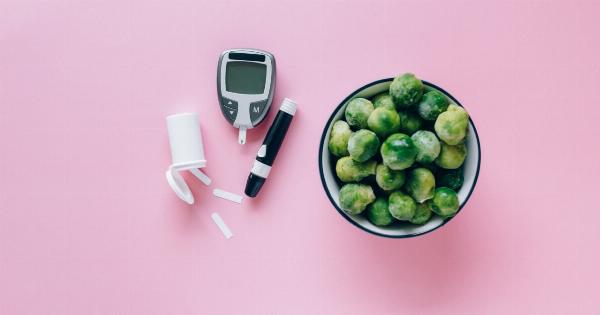Type 2 diabetes is a chronic condition that affects how your body metabolizes sugar (glucose), a vital source of energy. It occurs when your body becomes resistant to insulin or doesn’t produce enough insulin to maintain normal blood sugar levels.
While type 2 diabetes can affect both men and women, research has shown that women face specific health risks when it comes to this condition. This article will explore the various aspects of type 2 diabetes in women, including risk factors, symptoms, and preventive measures.
1. Gender-Specific Risk Factors for Type 2 Diabetes
Women experience certain risk factors that make them more prone to developing type 2 diabetes. These factors include:.
- Polycystic Ovary Syndrome (PCOS): PCOS affects hormone levels and can increase the risk of insulin resistance, making women more susceptible to type 2 diabetes.
- Gestational Diabetes: Women who have experienced gestational diabetes during pregnancy have a higher risk of developing type 2 diabetes later in life.
- Hormonal Changes: Fluctuations in hormone levels, such as those occurring during menopause, can trigger insulin resistance and increase the risk of developing diabetes.
2. Symptoms of Type 2 Diabetes in Women
The early symptoms of type 2 diabetes in women are often subtle and easily overlooked. However, it’s crucial to identify these signs to prevent complications. Common symptoms include:.
- Increased thirst and frequent urination
- Unexplained weight loss
- Fatigue and weakness
- Blurred vision
- Skin infections or slow wound healing
- Tingling or numbness in hands and feet
3. Diabetes-Related Health Complications in Women
Women with type 2 diabetes are at a higher risk of developing a range of health complications. Some of these complications include:.
- Heart Disease: Women with diabetes have a significantly higher risk of heart disease compared to men with diabetes.
- Stroke: Diabetes can increase the risk of stroke in women, particularly if blood sugar levels are not well managed.
- Kidney Disease: Diabetes is one of the leading causes of kidney disease in women, contributing to complications such as kidney failure.
- Eye Problems: Diabetic retinopathy, a condition that damages the blood vessels in the retina, is more common in women with type 2 diabetes.
- Sexual and Reproductive Health Issues: Diabetes can cause sexual and reproductive health problems, including vaginal and urinary tract infections, decreased libido, and complications during pregnancy.
4. Preventive Measures for Women
While some risk factors, such as family history and genetics, cannot be changed, there are several preventive measures women can take to reduce their risk of developing type 2 diabetes. These include:.
- Maintaining a healthy weight: Engaging in regular physical activity and following a balanced diet can help prevent obesity, a significant risk factor for type 2 diabetes.
- Managing blood pressure and cholesterol levels: Regular check-ups, medication, and a healthy lifestyle can help in maintaining optimal blood pressure and cholesterol levels.
- Quitting smoking: Smoking increases the risk of developing type 2 diabetes and various other health problems. Quitting smoking can significantly lower this risk.
- Controlling stress levels: High stress levels can contribute to insulin resistance. Managing stress through relaxation techniques and engaging in activities you enjoy is essential.
- Regular diabetes screenings: Women who have experienced gestational diabetes or have other risk factors should undergo regular screenings to catch any signs of diabetes early.
Conclusion
Type 2 diabetes poses specific health risks for women, and it is crucial to be aware of the gender-specific factors that contribute to its development.
By understanding the symptoms, complications, and preventive measures associated with type 2 diabetes, women can take proactive steps to manage their health and reduce their risk of developing this chronic condition.























